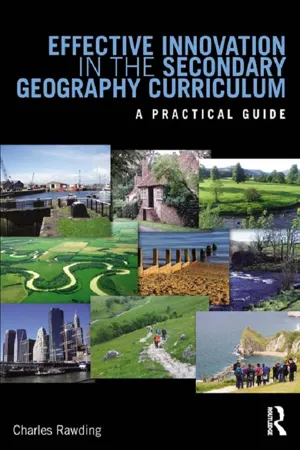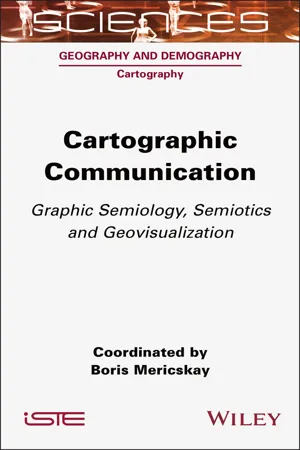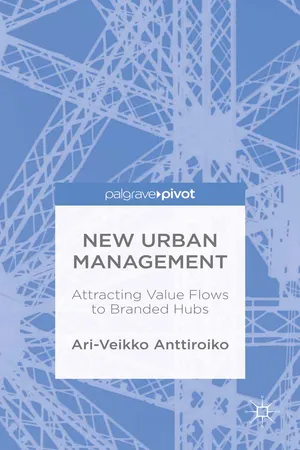Geography
Flows
Flows refer to the movement of people, goods, and ideas across geographical spaces. These movements can be local, regional, or global and can be influenced by factors such as transportation infrastructure, economic policies, and cultural exchange. Understanding flows is important in geography as it helps to explain patterns of migration, trade, and cultural diffusion.
Written by Perlego with AI-assistance
Related key terms
1 of 5
5 Key excerpts on "Flows"
- eBook - ePub
Men of the World
Genders, Globalizations, Transnational Times
- Jeff Hearn, Author(Authors)
- 2015(Publication Date)
- SAGE Publications Ltd(Publisher)
7 Processes of Flows (1): Movements, Environments, and MigrationsThis chapter is the first of two chapters focusing on processes of movements and Flows. These clearly concern physical movements of people, as in environmental movements;1 migration and travel; and various kinds of movement of information, ideas, beliefs, images, symbols, religions, ways of thinking and feeling, and representations, most obviously through ICTs. Movements and Flows are also central concerns in national and transnational citizenship, and its intersectional gendering. All these examples need to be considered in relation to ‘men of the world’, in their different locations, in which men are both bound together, homosocially networked, yet geographically and socially apart.Transnationalization takes place through processes of movements and Flows, of numerous types and forms. They are everywhere. They constitute identities, settlements, communities, organizations, wealth, finance, communications, information, images, environments, and so on. Movements and Flows are also movements and Flows of bodies, individual and collective, what might be called moving bodies. Movements and Flows occur over time and place, dispersed in time and place, moving and developing from place to time and over time, framed beyond the agentic, and organized through institutions, organizations and organizings that are both embedded and sedimented. These are in effect the structures – frameworks, framings, controls – of movements, Flows and processes. And then there are the processes, the waves, the characteristic form of movements and Flows. These are especially important in problematizing men. They undermine fixities of men and masculinity, and show their, at times, fictional power and status. This is clear with both the environment and migration. In both these arenas men and masculinity may be powerful, yet potentially destabilized. Migration may mean, though by no means always, relative downward movements in the social status of some men, even when with material gain. Environmental change may threaten livelihoods, and even human survival. - eBook - ePub
Effective Innovation in the Secondary Geography Curriculum
A practical guide
- Charles Rawding(Author)
- 2013(Publication Date)
- Routledge(Publisher)
Recent developments in physical geography at an academic level have been focused on notions of the anthropocene — that is to say the geological period that has been heavily influenced by human activity. Such a concept developed for the classroom automatically integrates human and physical geography by looking closely at people—environment links and human influences on the development of landscape and society. In this context, making use of a realist approach to physical geography should enable effective explanation in the classroom. Such an approach aims to blend general principles in physical geography with local events: looking at the space or area involved, the timing of events, the thresholds involved in the changes in process intensity, and the frequency of the processes involved (Suggitt 2010). An incorporation of these elements into the study of any physical environment provides a transferable framework for understanding physical geography in a wide range of contexts.The remainder of this chapter will focus on a series of examples from physical geography to illustrate how the most recent developments within the sub-discipline can be incorporated within the Geography classroom. However, it is important to bear in mind the integrated nature of physical geography and the importance of being able to understand the development of physical processes in different contexts.Fluvial geomorphology
The very phrase fluvial geomorphology suggests quintessential physical geography. However, if we look at recent work in this area it becomes very clear that the themes discussed above are permeating all areas of physical geography (Charlton 2008). Above all, there is a call for integration, the need to be able to understand entire systems in all their complexity, even where this necessitates focusing on individual elements initially. For instance, the interactions between hillslope systems and channel—floodplain systems need to be fully appreciated to understand how the fluvial system responds to change. The basic unit of the fluvial system is the drainage basin, which is influenced by a very wide range of factors (see Table 8.3 - eBook - ePub
- Cynthia Metcalf, Rhonda Atkinson(Authors)
- 2017(Publication Date)
- Research & Education Association(Publisher)
People are central to geography in that human activities help shape Earth’s surface. Human settlements and structures are part of Earth’s surface, and humans compete for control of Earth’s surface. This element looks at characteristics, distribution, and migration of human populations. It also tries to find patterns—in culture, economic interdependence, human settlement, conflict and cooperation—and how these patterns influence people’s relationships with each other and the Earth. This element consists of the following standards:1. the characteristics, distribution, and migration of human populations;2. the characteristics, distribution, and complexity of Earth’s cultural mosaics;3. the patterns and networks of economic interdependence;4. the processes, patterns, and functions of human settlement;5. how forces of cooperation and conflict among people influence the division and control of Earth’s surface.Movement is a key factor in human systems. Movement involves transportation (imports and exports), flow of people (immigration and migration), and spread of ideas and information (communications, Internet usage). For example, cultural diffusion is an aspect of movement that focuses on how ideas, innovation, and ideology spread from one area to another. Spatial interaction describes how places interact through movement. Although everything is theoretically linked to everything else, nearer things are usually related more to each other than to faraway things. Thus, the extent of spatial interaction often depends on distance.In evaluating movement and spatial interaction, geographers often evaluate the friction of distance , the degree to which distance interferes with an interaction. For example, the friction of distance for a working-class Ohio man wanting to visit a dentist in Ethiopia is quite high, meaning that the distance gets in the way of this interaction occurring. However, the friction of distance has been reduced in many aspects of life with improved transportation and communication infrastructures. Thus, the friction of distance is not as much of a problem for a business in Florida to sell something to a business in Taiwan. Businesses can now communicate over the Internet, buying and selling their goods in transactions that would have taken months to complete just 30 years ago. This increasing sense of accessibility and connectivity seems to bring humans in distant places closer together, a phenomenon known as space-time compression - eBook - ePub
Cartographic Communication
Graphic Semiology, Semiotics and Geovisualization
- Boris Mericskay(Author)
- 2023(Publication Date)
- Wiley-ISTE(Publisher)
The multi-representation work proposed here has focused attention on the questions surrounding the mapping global trade Flows, thus highlighting the role of specific spatial challenges (related to “alignment”, “route” or itinerary and “joint” effects). If we had dealt with other types of Flows and movements, we would have been confronted with other issues for their representation. The case of migratory movements, for example, induces specific problems that are, above all, linked to the geopolitical context of the moment and to humanistic considerations related to human rights or political ideologies, imposing particular attention on the rhetoric and the style of the map: the choice of words, forms, colors, and signs.At a time when data on Flows and movements are multiplying, particularly around transport, mobility and migration, it is important to question and investigate this form of cartography, which is playing an increasingly important role in the practices of both traditional players (cartographers, geographers) and newcomers (web designers, private platforms, data journalists, NGOs, etc.) The cartography of Flows and movements requires now, more than ever, to be understood according to informational, technical, methodological and stylistic perspectives in order to reflect and propose effective forms of cartographic communication adapted to the representation of a world that is moving.4.6. References
- Amilhat Szary, A.L. (2018). Qu’est-ce qu’une frontière aujourd’hui ? Presses Universitaires de France, Paris.
- Bacon, L., Clochard, O., Honoré, T., Lambert, N., Mekdjian, S., Rekacewicz, P. (2016). Cartographier les mouvements migratoires. Revue européenne des migrations internationales, 32(3/4), 185–214.
- Bahoken, F. (2014a). Pour le renouvellement de la sémiologie de la carte de flux. Cartes et Géomatique, 222, 109–121.
- Bahoken, F. (2014b). Éléments pour une représentation (carto)graphique des matrices de flux. Mappemonde, 115 [Online]. Available at: http://mappemonde.mgm.fr/num43/articles/art14304.html [Accessed 12 July 2021].
- Bahoken, F. (2016a). L’approche cartographique de la décomposition des matrices de flux. Mappemonde, 116 [Online]. Available at: http://mappemonde-archive.mgm.fr/num44/articles/art14404.html
- eBook - ePub
New Urban Management: Attracting Value Flows to Branded Hubs
Attracting Value Flows to Branded Hubs
- A. Anttiroiko(Author)
- 2015(Publication Date)
- Palgrave Pivot(Publisher)
3 Flows of People, Cultures and SymbolsAbstract :This section discusses the aspects of urban dissipative structure that go beyond material Flows. Discussion starts with a brief outlook of migration Flows. Next topic is the political economy of urban symbolism followed by discussion of economies of signs and of the cultural landscapes of late modernity. The figures whose theorisations are in focus include Manuel Castells, Scott Lash, John Urry and Arjun Appadurai. This chapter provides not only a glance at space of Flows and similar concepts but also a selective introduction to the sociological side of flow analysis.Keywords : cultural Flows; economies of signs; late modernity; Manuel Castells; migration; reflexive economy; space of Flows; symbolic economyAnttiroiko, Ari-Veikko. New Urban Management: Attracting Value Flows to Branded Hubs . Basingstoke: Palgrave Macmillan, 2015. DOI : 10.1057/9781137532640.0005.Prelude: people crossing the bordersWe live in the age of migration. The phenomenon itself is not a new, and the growth of the flow of long-term migrants across borders has increased actually modestly: in recent decades, growth rate being in line with population growth. Also the share of population that lives outside its country of origin has persistently stayed around 2.7%, which indicates the existence of strong barriers to the movement of people. Nevertheless, migration has become both regional and global phenomenon with tremendous impact on both origin and destination countries (Castles et al., 2013). The dynamism of population Flows is increased by rapidly growing short-term movements, consisting of voluminous Flows of business and leisure travellers, totalling 910 million in 2012, and smaller numbers students and other special groups (Manyika et al., 2014, 29–30).A major cause of migration is people’s eagerness to seek a better life in the context of growing inequality in incomes and human security. It causes the major migration Flows between rich and poor countries. Beside inequality, migration is pushed further by rapid demographic transitions and technological advances in transport and communications. Another global dimension in this respect is that migrants do not shift altogether their social existence from one society to another – with a lifelong commitment to a new destination and building of new relationships and identity – but maintain transnational connections (Castles, 2013). So far in the geography of global migration Flows North America, Europe and Oceania (incl. Australia) have been centres of gravitation, whereas net out-migration has been typical to countries in Asia, Latin America and Africa. Largest Flows of migration have moved from Asia to Europe and from Asia and Latin America to North America (see Figure 3.1
Index pages curate the most relevant extracts from our library of academic textbooks. They’ve been created using an in-house natural language model (NLM), each adding context and meaning to key research topics.




